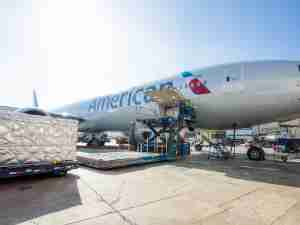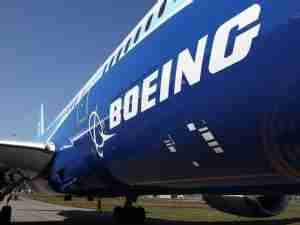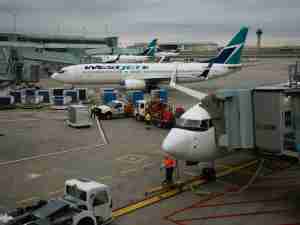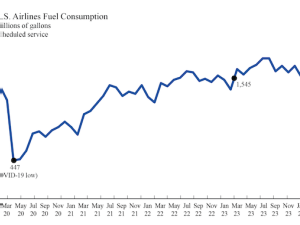We are seeing a big push happening this year in aviation, driven by calls on airlines to decarbonize and investor interest in new aviation technology startups.
I have spent the past six months researching a handful of new technologies being developed by startups to help decarbonize aviation. These include electric flight, hydrogen and biofueled flight, and new aircraft design. The work is part of BNEF’s annual climate-tech innovation competition, the BNEF Pioneers, whose objective is to identify companies with the potential to change the industry and those pushing forward with innovations that support a low-carbon economy.
Here are some of the more interesting trends we’ve identified recently:
• Venture capital funding for climate-tech startups has surged in the past year
Low-carbon transport companies were the largest recipients. Investors are drawn to transport as an investment category because many offerings are cost competitive and have a good product-market fit. Also, there have been successes in the industry, particularly for companies involved in low-carbon road transport, such as battery-maker CATL and Chinese electric-vehicle startup Nio.
• Aviation may be the next big market for climate-tech investors
As low-carbon road transport technologies mature, investors are looking for new opportunities and expanding into aviation and shipping. Venture capital and private equity (VCPE) investment in aviation technologies has surged 724% from 2017 to 2021, totaling almost $3 billion in 2021, according to BNEF.
Public markets also have demonstrated an interest in the sector. Urban air mobility companies such as Joby Aviation and Lilium raised billions of dollars through reverse mergers last year.
• Urban air mobility doesn’t meaningfully contribute to broader sustainability targets
The majority of climate-tech investment to date has been in urban air mobility companies looking to transform private intracity travel. An electric vertical take-off and landing (eVTOL) aircraft could go from the city of London to Heathrow airport in six minutes, traveling at top speed, for example. But these urban flights — some of them electric — will at best displace cars with a more energy-intense form of travel. At worst, they will replace public transit.
While investors are excited by the promise of this type of travel, the contribution by such startups to broader sustainability goals will be limited. Over 50% of global flight departures fly under 1,111 kilometers (690 miles), but only account for 1% of total miles flown globally.
• Innovations in long-haul commercial aviation
The innovations required include changes in drivetrain — to electric motors, fuel cells or modified turbines — and moves to zero-carbon fuel. This is technically possible, and many new aircraft have been tested and shown to work for short-haul flights, but none are commercially available yet. Of the 225 startups BNEF has identified as building sustainable aviation technologies, two in particular — Twelve and ZeroAvia — are BNEF Pioneers standouts.
Twelve has developed a process for converting CO2 into jet fuel, and ZeroAvia has become a key player in the race to produce hydrogen aircraft. The two startups are working to improve the performance and efficiency of sustainable aviation technologies, but both face significant hurdles in commercializing their products. The cost involved and the time it takes to replenish traditional fleets with low-carbon aircraft, to replace existing infrastructure, and to certify safety standards, is substantial. Investors will play a role, but stronger policy and regulation will be needed ultimately to demonstrate that these technologies are safe.









